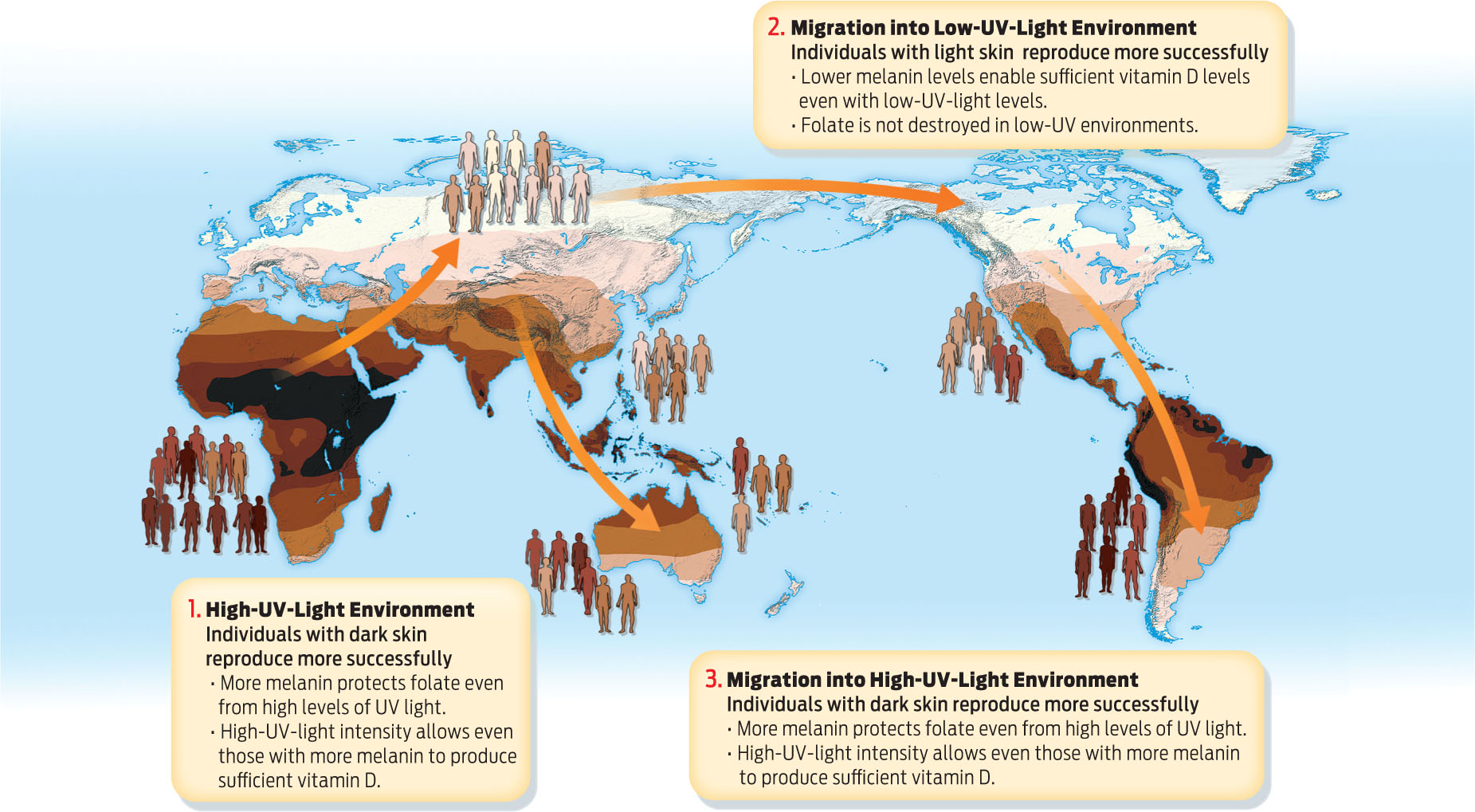An Evolving Explanation
There are a number of other hypotheses for the evolution of skin tone, but of all of them, the folate-vitamin D hypothesis has the most supporting evidence and is consequently “the most reasonable,” says Mark Stoneking of the Max Planck Institute for Evolutionary Anthropology in Leipzig, Germany, who collaborated on the Mitochondrial Eve study. In fact, Stoneking says, “Skin tone is one of the best examples of human evolution.” It’s an example in which we can see that genes have definite phenotypic effects, in this case on skin pigmentation, and we can also see that the traits were selected, he explains.
Scientists know that these skin-color genes have been favored by specific environments because they carry genetic signatures of natural selection. To study whether natural selection favored any particular trait, scientists typically look at the amount of allelic diversity that exists for a gene of interest. Fewer alleles than average in a population means that there was some environmental pressure that selected the alleles for that trait (see Chapter 15). Genes that are not being acted on by natural selection show higher amounts of allelic diversity in the population.
Indeed, skin-color genes show this very pattern—they show less allelic diversity than genes for other traits. The particular alleles that predominate in a particular population are ones that originally provided a selective advantage to its members by producing more or less melanin. Dark-skin alleles were favored in high-UV environments, while light-skin alleles were favored in low-UV environments. Skin color is thus a proxy for the geographic origin of our ancestors, but not much else (INFOGRAPHIC 20.10).
Human skin color is an example of a trait that has undergone natural selection. Varying levels of UV light have selected for a range of skin tones around the globe. In each case, the amount of melanin represents a compromise between the need to protect folate and the need to make vitamin D.

Throughout human history, the lines between what we have come to call races have been fluid. Genetic studies show that hardly any population is “pure” in the way that many have thought. As people moved around the globe, they settled and often bore children with people they met along the way, introducing new alleles into the local gene pool. The particular environment people encountered favored some traits over others, and that is why populations that live in similar environments share similar features.
Though people tend to create racial groupings based on obvious physical characteristics, such features can be shared with other groups, says Jablonski. Not all Africans have equally dark skin and not all Europeans are light skinned, for example. And as humans travel more, settle in different areas, and intermarry, Jablonski says, “racial categories will get messier and messier.” Perhaps in time the concept of race itself will disappear. 